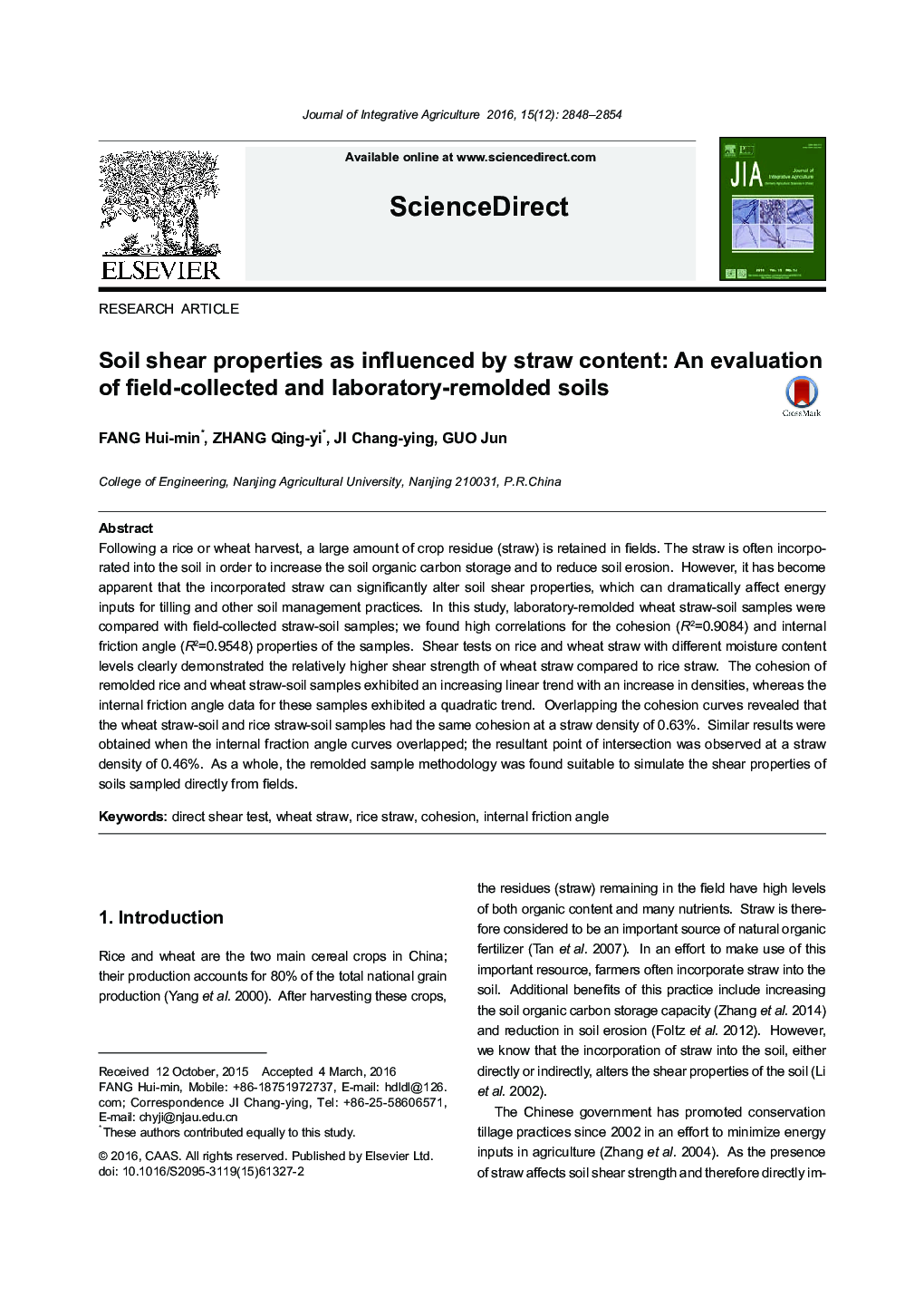| Article ID | Journal | Published Year | Pages | File Type |
|---|---|---|---|---|
| 8876181 | Journal of Integrative Agriculture | 2016 | 7 Pages |
Abstract
Following a rice or wheat harvest, a large amount of crop residue (straw) is retained in fields. The straw is often incorporated into the soil in order to increase the soil organic carbon storage and to reduce soil erosion. However, it has become apparent that the incorporated straw can significantly alter soil shear properties, which can dramatically affect energy inputs for tilling and other soil management practices. In this study, laboratory-remolded wheat straw-soil samples were compared with field-collected straw-soil samples; we found high correlations for the cohesion (R2=0.9084) and internal friction angle (R2=0.9548) properties of the samples. Shear tests on rice and wheat straw with different moisture content levels clearly demonstrated the relatively higher shear strength of wheat straw compared to rice straw. The cohesion of remolded rice and wheat straw-soil samples exhibited an increasing linear trend with an increase in densities, whereas the internal friction angle data for these samples exhibited a quadratic trend. Overlapping the cohesion curves revealed that the wheat straw-soil and rice straw-soil samples had the same cohesion at a straw density of 0.63%. Similar results were obtained when the internal fraction angle curves overlapped; the resultant point of intersection was observed at a straw density of 0.46%. As a whole, the remolded sample methodology was found suitable to simulate the shear properties of soils sampled directly from fields.
Related Topics
Life Sciences
Agricultural and Biological Sciences
Agricultural and Biological Sciences (General)
Authors
Hui-min FANG, Qing-yi ZHANG, Chang-ying JI, Jun GUO,
